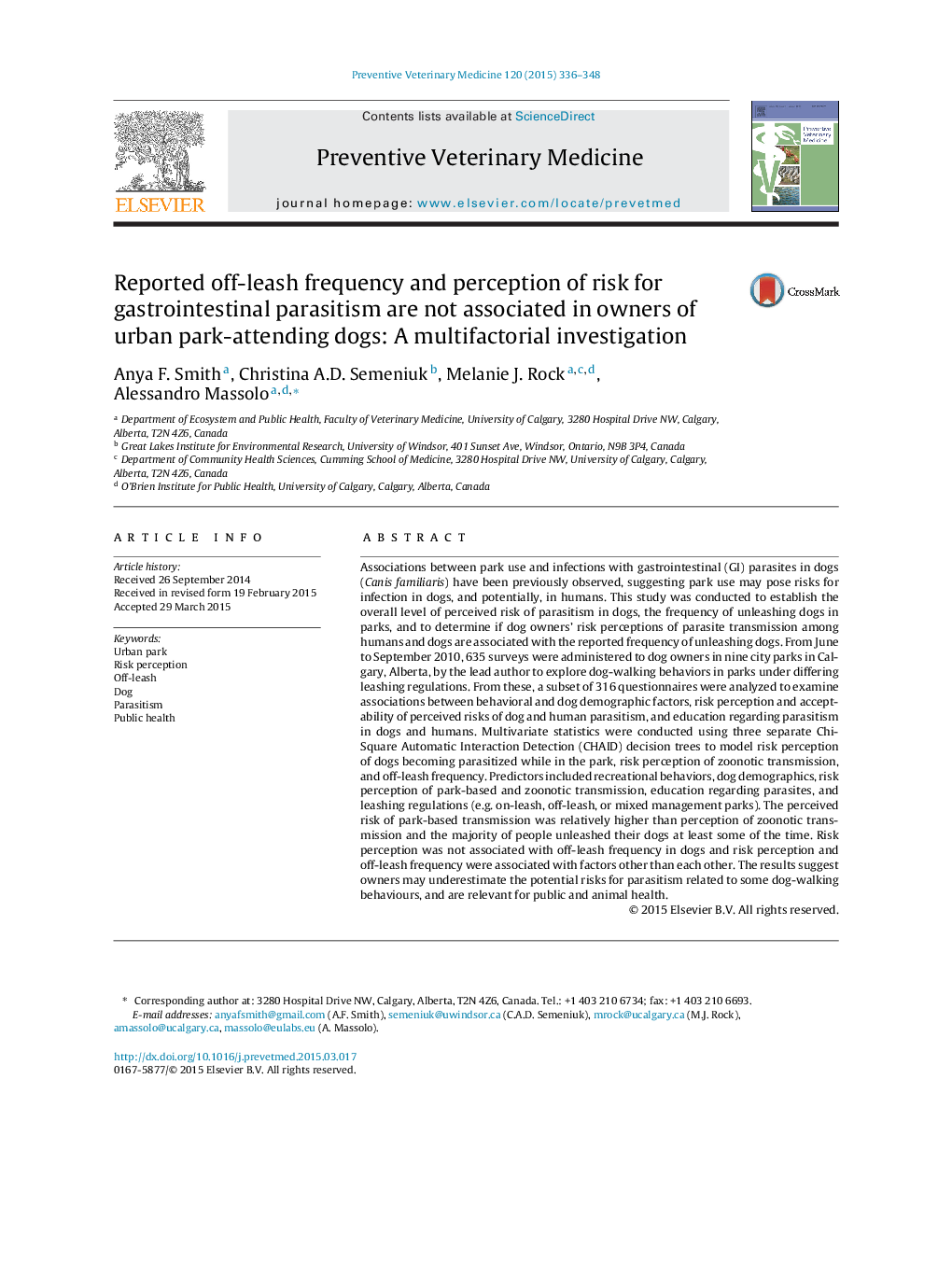| کد مقاله | کد نشریه | سال انتشار | مقاله انگلیسی | نسخه تمام متن |
|---|---|---|---|---|
| 2452379 | 1554169 | 2015 | 13 صفحه PDF | دانلود رایگان |
• We examined dog owners’ risk perception of parasite transmission and park-based activities.
• Unleashing dogs was a previously reported risk factor for enteric parasitism in dogs.
• The perceived risk of parasite transmission was low.
• Perceptions and unleashing dogs were related to factors other than each other.
• Owners may underestimate animal and public health risks associated to unleashing dogs.
Associations between park use and infections with gastrointestinal (GI) parasites in dogs (Canis familiaris) have been previously observed, suggesting park use may pose risks for infection in dogs, and potentially, in humans. This study was conducted to establish the overall level of perceived risk of parasitism in dogs, the frequency of unleashing dogs in parks, and to determine if dog owners’ risk perceptions of parasite transmission among humans and dogs are associated with the reported frequency of unleashing dogs. From June to September 2010, 635 surveys were administered to dog owners in nine city parks in Calgary, Alberta, by the lead author to explore dog-walking behaviors in parks under differing leashing regulations. From these, a subset of 316 questionnaires were analyzed to examine associations between behavioral and dog demographic factors, risk perception and acceptability of perceived risks of dog and human parasitism, and education regarding parasitism in dogs and humans. Multivariate statistics were conducted using three separate Chi-Square Automatic Interaction Detection (CHAID) decision trees to model risk perception of dogs becoming parasitized while in the park, risk perception of zoonotic transmission, and off-leash frequency. Predictors included recreational behaviors, dog demographics, risk perception of park-based and zoonotic transmission, education regarding parasites, and leashing regulations (e.g. on-leash, off-leash, or mixed management parks). The perceived risk of park-based transmission was relatively higher than perception of zoonotic transmission and the majority of people unleashed their dogs at least some of the time. Risk perception was not associated with off-leash frequency in dogs and risk perception and off-leash frequency were associated with factors other than each other. The results suggest owners may underestimate the potential risks for parasitism related to some dog-walking behaviours, and are relevant for public and animal health.
Journal: Preventive Veterinary Medicine - Volume 120, Issues 3–4, 1 July 2015, Pages 336–348
